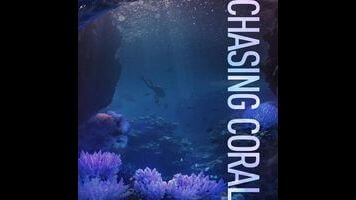Scientists overwhelmingly agree that humanity’s enormous carbon footprint is potentially disastrous, but reading peer-reviewed papers with titles like “Attributing Physical And Biological Impacts To Anthropogenic Climate Change” doesn’t exactly stir the blood. Even Al Gore’s PowerPoint lecture in An Inconvenient Truth (which has a sequel forthcoming in just a few weeks), with its onslaught of facts and figures, skews a little dry. Seeking to provide a more visceral sense of the danger, documentary filmmaker Jeff Orlowski has spent much of the past decade training cameras on natural phenomena that are vanishing at an alarming rate. His first feature, 2012’s Chasing Ice, employed time-lapse photography to show the speedy disappearance of various Arctic glaciers, and was almost as visually stunning as it was disturbing. Now, Orlowski has made a sequel of sorts, Chasing Coral, which offers a similarly majestic/bleak look at the effect of rising ocean temperatures on the world’s coral reefs. They’re advocacy docs with aesthetics.
Granted, there’s still some standard-issue tedium to ignore—this is a film that begins with someone saying “I’ve always been drawn to the magic of the ocean.” (Good for you, buddy.) But after quickly introducing Orlowski’s colleagues—primarily Richard Vevers, founder and CEO of The Ocean Agency, and self-described “coral nerd” Zack Rago—and relaying some basic info about corals and their ecological importance, Chasing Coral swiftly moves on to the team’s mission. As in Chasing Ice, this involves constructing special camera rigs capable of withstanding harsh conditions for weeks or months at a time. Initial attempts to photograph coral reefs in Hawaii, Bermuda, and the Bahamas fall prey to unexpected focus issues; later on, after they’ve tinkered with the cameras, a trip to the Great Barrier Reef is foiled by bad weather (which, ironically, is great news for the corals). In the end, Orlowski and the gang are forced to do the job manually, diving to the same locations every day and snapping the photos themselves.
What they get is beyond depressing. It’s one thing to be told that 22 percent of the Great Barrier Reef died in 2016; it’s quite another to actually see the corals before and after. In almost nothing flat, what had been a riot of fluorescent color turns either bone white (a stress response known as coral bleaching, which heralds impending doom) or slate gray (in which case the animals have already died, exposing skeletons that could easily be mistaken for rock formations). Chasing Coral doesn’t have quite the same impact as Chasing Ice, because the time-lapse aspect didn’t really work out—Orlowski captures the stark difference, but “alive, then dead” just isn’t as dramatic as watching glaciers shrink and disappear before your eyes. Also, this film, more than its predecessor, frequently adopts the soporific rhythms of reality TV, cutting back and forth between preparations and explanations. But Chasing Coral has a cogent, timely argument to make—and, crucially, it’s an argument that demands visual presentation. For once, reading a book or in-depth article on the subject wouldn’t be remotely as persuasive (except perhaps regarding the question of whether human activity is primarily responsible). If your eyes work, your heart will sink.

